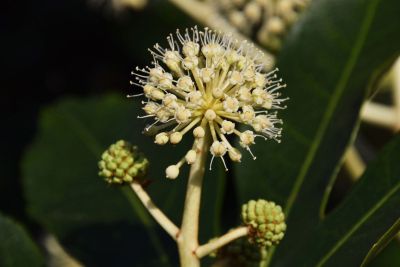About Fatsia Plants
Fatsia is a shrub native to Japan. It has a tropical appearance with bold, large leaves that are shiny and dark green. Fatsia grows 8 to 12 inches (20.5-30.5 cm.) per year and ultimately up to 10 feet (3 m.) tall and wide. In warm climates such as the southeastern U.S., fatsia makes a pretty ornamental and is an evergreen. Grow it in moist, rich soil that drains well and in areas with dappled shade for best results. You can also grow fatsia in containers or indoors. Transplanting is stressful for this shrub, so consider trying fatsia seed propagation.
How to Plant Fatsia Seeds
Fatsia doesn’t respond well to transplanting and, while cuttings can be used, seed propagation is the main way that the plant is grown. To start planting fatsia seeds, you must first collect the seeds from the black berries of a fatsia shrub or order some online. If collecting your own seeds, you will need to soak the berries and crush them to get the seeds from them. Starting seeds indoors or in a greenhouse is best that way you won’t have to consider when to sow fatsia seeds outdoors, where conditions can be too variable. Plant the seeds in rich potting soil, adding compost if necessary. Use warming mats under the starter pots, as fatsia seeds require bottom heat of around 80 F. (27 C.). Add a little water to the soil and cover the tops of pots with plastic wrap to keep seeds and soil warm and moist. Water as needed, about every few days. You should see the seeds germinate in two to four weeks. Remove the plastic wrap once the seedlings emerge from the soil but keep the warming mat on for another week or two. Transplant 3-inch (7.5 cm.) seedlings to larger pots and keep them warm. You can transplant seedlings outside to their permanent beds once the soil outdoors has reached at least 70 F. (21 C.).
